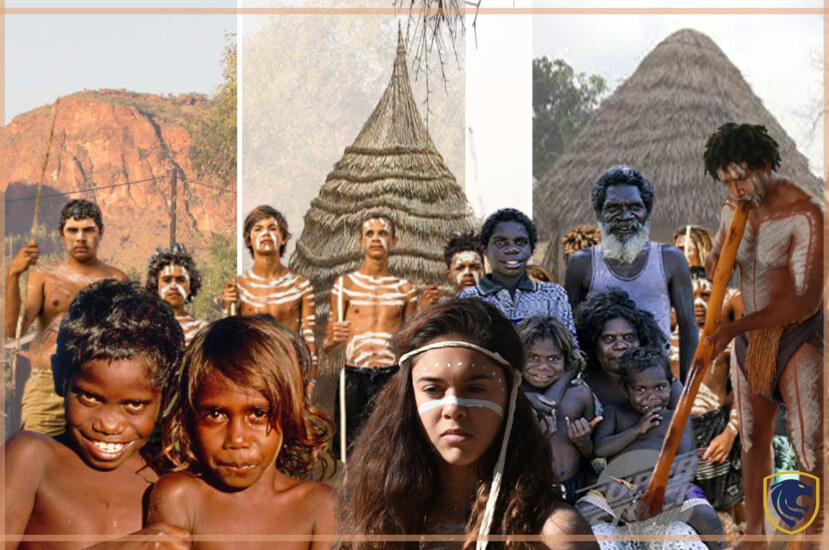History of Aboriginal People

At the beginning of the 16th century, when Europeans first began to settle in Australia, Aboriginal people had long-established a communal society based on cooperation and mutual aid. Though this new style of interaction with their European settlers was sometimes described as being “tolerant,” it is not without its complexities. This specific tribe of people is an example of a community that lives in harmony with each other. At the same time, they were very territorial and protective of their land. This created conflict between the two groups, but in the end, it allowed for peaceful coexistence.
The Aboriginals had made an adjustment to their way of life and culture. They could survive in such a harsh climate and environment. This change was vital to the development and survival of the Aboriginal people. And it was this change that led to several other changes. The changes implemented by these aboriginals were mostly done for the good of the entire community as opposed to just themselves individually.
Lifestyle
They would hunt small game like kangaroos, wombats, and goanna’s for food. They would also fish in the rivers and lakes to eat. This hunting would take place during certain seasons each year. When these small game animals were caught, they could eat them immediately. Sometimes they were kept alive to be used as food later on. The Aboriginals found that catching several animals at once was better than catching many smaller animals individually. Because the larger animal provided more food than the smaller ones did. At first, this idea might seem foreign. But today we understand that it is a good idea all around because it is faster, easier, and more efficient to have a larger amount of meat than a smaller amount of meat.

The meat of the animals was not the only useful part of them. They also used what they could for tools. Bones for spears for hunting, dung cakes to light their fires, dingo skins for clothes or blankets, fat from dingos, or burning dung was used as an oil to soften their skin and protect it from the cold weather. They made bags out of kangaroo stomachs, goanna skins were made into shields, and stringybark was used for making nets.
Aborigines Began To Adjust Their Lives.
The Aboriginals began to adjust their lives in accordance with their surroundings, and their surroundings changed them as well. The Australian climate is harsh and hot in the summer and frigid cold in the winter. The Adelaide region has very little annual rainfall, about 550 mm (22 inches) per year. Aboriginal people found that living in the wetter areas was not the best place to live. This is because when it rained, they would get wet. And in this climate, it is important to stay dry and warm. They learned at some time. Their ancestors decided to make a new life for themselves. And move away from the large lakes into drier areas where it was easier to find food and drinkable water. This allowed them to stay dry and warm even during rainy seasons.
The Aboriginals discovered as time went on that certain birds were the only ones that could survive living around such harsh conditions as well as them. For example, one of their ancestors by the name of Daru was trapped a Taipan snake. And brought it back to his camp. He then began to feel that animals like this might live in the colder regions of the country alongside him and his people.
Daru, along with others, began to travel in search of new lands to settle with their people in. Daru was searching for a location where he could build a strong, warm community in which all his people could live under one roof in one place so they could protect themselves from this cold weather. When Daru found a place, he liked he took many members from his settlement there and then continued on with the search for another new home for everyone that was left behind back home in Australia.
Aboriginal’s Culture and Tradition

The Aboriginals would continue to adapt their culture and tradition with the change in environment. The family of Daru’s son, Narang, was one of the first to follow him in search of new lands for his people. They traveled to Henry Head on the Fleurieu Peninsula south of Adelaide, near Mount Remarkable. This family produced some of the earliest rock art paintings in Australia, which are known as ‘Eddie’s Underground,’ ‘Darwin’s Dream,’ and ‘Thames.’
The Aboriginals did not want to abandon everything they knew. So, they did not uproot everything at once when they settled on new lands. They kept some of the traditions from where they came from with them as well as began to adopt some new traditions from their new location.
In the period from 1788 to 1850, the Aboriginal people now called the ‘Karadja’n/Kieruk Ngiyaatji lived in what is now known as the “Karadja” n land. During this time, their population was about 40,000. This tribe survived by hunting animals and gathering food. They used bows and arrows to hunt small animals such as goanna’s, kangaroos, and possums, but they traded their fur to obtain tools like tools for stringing nets or skins for clothing and blankets. They also used fire sticks to light their fires. The Aboriginals caught small fish, dug up grubs, picked berries, and picked corn which they would then grind into flour. These foods were then eaten by the Aboriginals and others who came to live with them in the new land.
Aboriginals Adapted To This New Location.
The Aboriginals adapted to this new location and started hunting for animals and gathering more food than they did before. The more animals they hunted, the more people would come and live with them in this new location instead of going back where they had come from. When the Aboriginals settled in this new location, they lived in groups of about 2-3 families per group around the area. They had to build shelters with the tools they had. Because there were not many trees that grew taller than two meters at that time.

They built huts made of woven branches, then came together to build large huts made of wood. The huts were typically shared by upwards of ten people. They hunted animals like wallabies, possums, bandicoots, and kangaroo’s for food or materials for their clothing and blankets. These resources helped them survive through the cold weather.
The Aboriginals used a system for measuring land to determine who owned what. They would use a long stick with a nail at the end of it. And stretch it out until it rested on top of something they designated as their territory. The end that touched the ground was their own property which was not allowed to be crossed by any other person without permission from their leader. Any person found to have broken this law would be punished. By being killed or held as a prisoner. This prevented disputes from arising from outsiders coming inside this person’s territory because they could not cross its limits without applying for permission.



